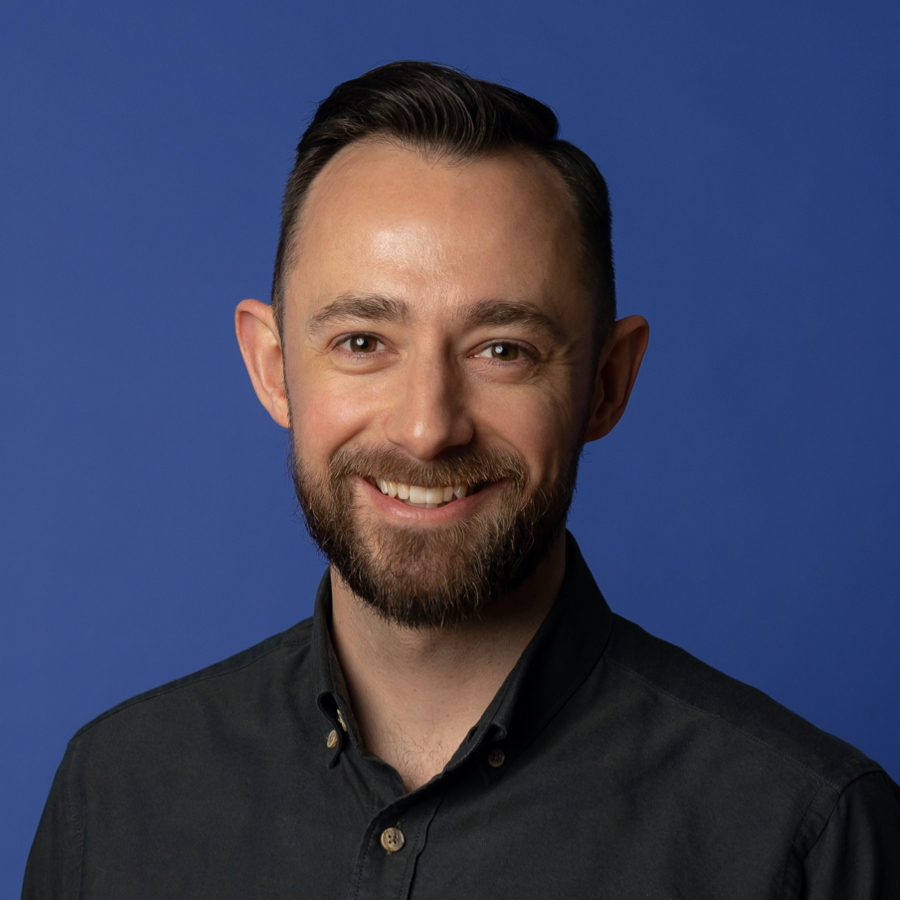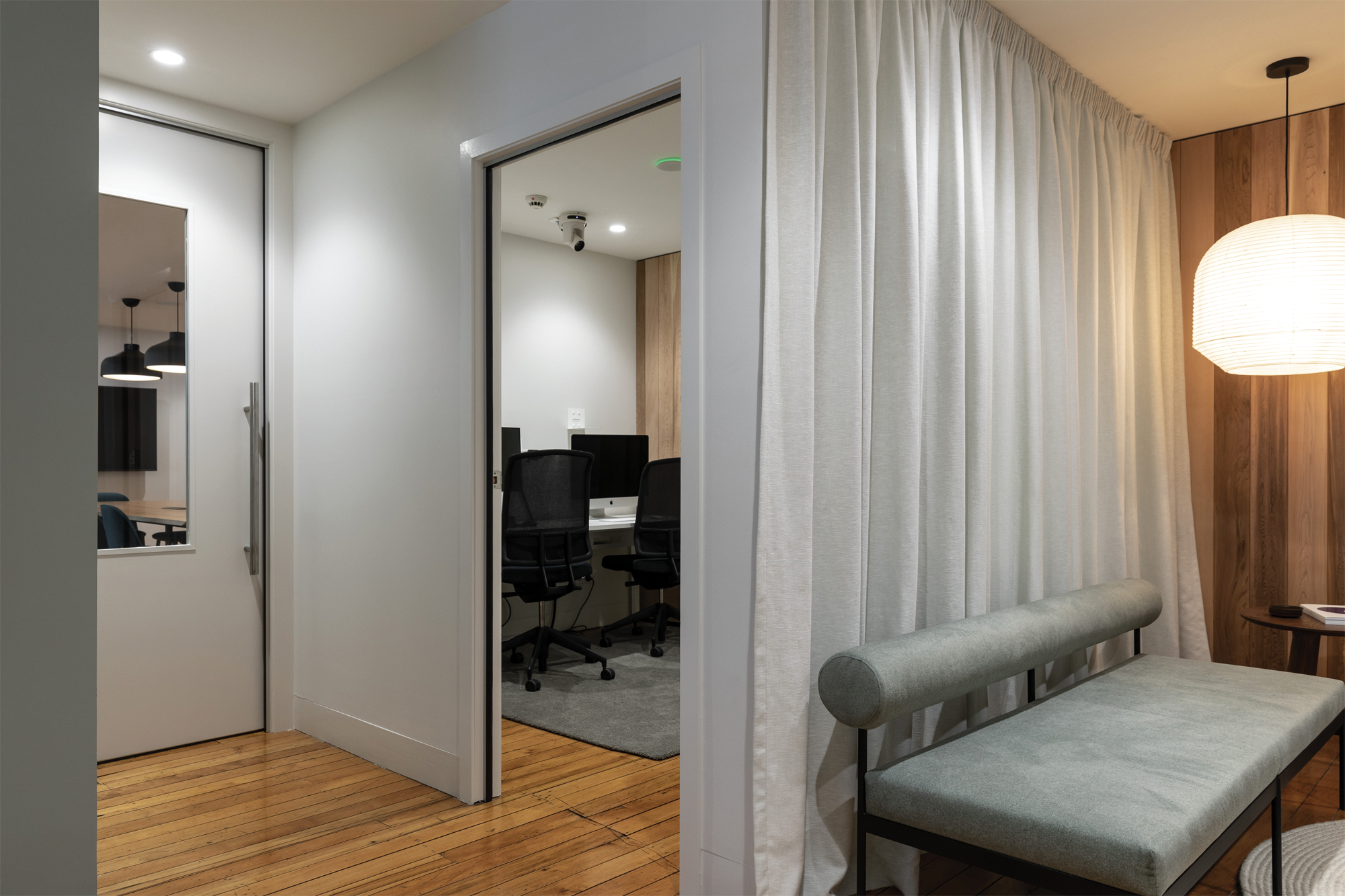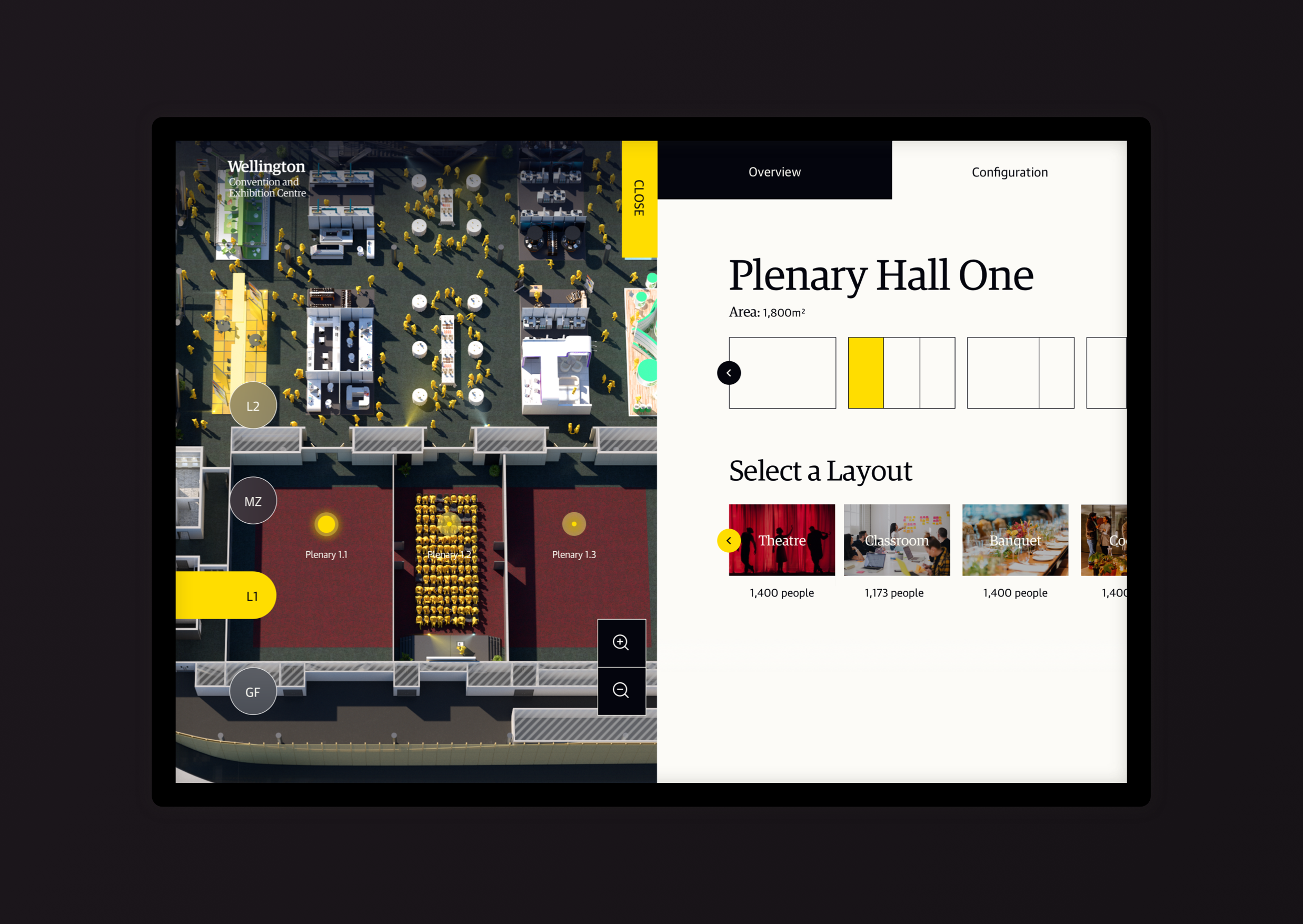Meet our friends… Brendan Jarvis, The Space Inbetween
Design Assembly has become the home of New Zealand visual design – providing a collaborative digital and physical platform for kiwi visual designers to learn, keep up-to-date and be inspired. We couldn’t do that without the support of our Friends. This series profiles some of the studios and individuals who have shown their love and support for DA. Today we spoke to Brendan Jarvis to learn more about our friends The Space InBetween, their new UX research laboratory and Brendan’s early entrepreneurial digital origins!

Kia ora Brendan, What is your background and how did you get into user experience design?
I’m a child of the Internet. No, really.
In 1995 I was 10 and my grandparents bought their first computer, along with this new thing called an Internet connection.
This was huge, as my Mum and I lived next door and until then I’d only been able to use computers at school, or at my best friend’s house.
Hearing that very first ‘bing-bong’ of the modem connecting changed my life forever.
That same year, I started my first business. Faxing hand-written web design sales letters to businesses that I’d found in the yellow pages.
It didn’t last very long, especially after my grandparents got their phone bill…
Eventually, five years later, I was given an opportunity by a family friend to design, build and market an ecommerce website.
Within two years, I’d helped to grow that into a multi-million-dollar business.
Fast forward a bit and since 2010, I’ve been running The Space InBetween, the business I founded after being told by some old ad guy that I was in the wrong industry. I guess I’m still trying to figure out if that’s the case.

What is the biggest risk you have taken in your career so far?
It was one that I wasn’t aware I was taking. It was getting comfortable with what I was doing.
Experience is a great thing but it’s also dangerous, as it can blind you from seeing things for what they are.
When you first start out, you don’t know what you don’t know and that’s what gets you going. It’s scary as hell but it also gives you the ability to push through.
But, after a certain number of years and after finding some success, you can start to think that you know more than you do.
That should be a big flashing red warning sign.
Things change much more quickly than you think. If you’re going to survive in the arena, you’ve got to stay uncomfortable.

What does a typical working day at The Space InBetween involve for you and what do you enjoy most about your job as managing founder?
That’s a hard one. I love what I do.
I get a lot of joy from seeing my team create things that they’re proud of. There’s something deeply satisfying about watching them grow as practitioners.
I’m also enjoying (mostly) the challenges that come with redefining how we help design leaders to create and measure the value of their work.
Design is a such a powerful tool and, collectively, we need to build greater belief in what we do.
As for the day to day, I like routine and structure.
We have a team standup each morning, which is great for checking in and setting the tone.
After that I try to divide my day into ‘maker time’ in the morning, where I focus on something big that requires my full attention and ‘manager time’ in the afternoon (connecting with clients, reviewing work, admin etc).
Lately, I’ve also been doing my best to have lunch with someone new and interesting each day.

You recently launched a collaborative lab space where design teams can come and experience and build capability in UX research and usability testing… What was the catalyst for the lab?
It was the nagging feeling that we, along with a lot of other designers (both internal teams and external teams) were doing plenty of talking about the importance of the user, of being user-centred, of putting the user at the heart etc.
Look, we believed it and we were trying to do it but, when I took a step back, we were definitely being more ‘user-scented’ than user-centred.
We lacked the rigour and structure needed to realise its true value. Once I’d seen that, it made me uncomfortable. I mean, who wants to be a hypocrite?
Then my son was born and, in that moment, when you’re about as in touch with reality as you can be, I started to ask myself some hard questions.
How do I want to invest my time? Am I solving the right problems? What does the next 10 years look like? Am I making a difference? Will I ever sleep again?
I decided that I needed to make some serious changes in my business. So, the lab.
But it’s not just a lab, it’s the deep layer of expertise that we’ve wrapped around it, to provide experiences that make ‘the user’ real and enable design teams to measure the impact of their work.
This is about proving our value of what we do and using that evidence to build belief in the power of design to make better businesses.
What are your ambitions for this space?
In New Zealand we have so much potential, but we still have this belief in number 8 wire innovation. It’s a total myth and seriously limiting, especially when it comes to achieving future prosperity.
We need to start taking ourselves and how we approach design more seriously, if we’ve got a hope of remaining competitive in such a rapidly evolving world.
That means getting serious about the nature and level of investment we make in the facilities, systems, processes and expertise that will help us to create cultures of innovation that build both capability and resilience.
My ambition for my company is for it to be a guiding light for a more human-friendly, innovative, resilient future New Zealand, by helping to elevate the status of design within our business community.
How can people get involved or learn more about the lab and what you’re doing there?
Visit our website – www.thespaceinbetween.co.nz. And if you’re interested in having a conversation about it, connect with me on LinkedIn – https://www.linkedin.com/in/brendanjarvis/.

The Space InBetween is about humanising business, through observable and measurable user-centred experiences. What should every designer know about user-centred design?
It’s not user-centred if you never actually involve the humans you’re designing for, early and often, in your process.
Persona’s don’t count.
Even if you’ve got that right, it doesn’t matter much if you can’t prove its valuable to people in your organisation, those who hold power outside of the design echo-chamber.
What I’m saying is…
You can have the greatest positive impact on the lives of the people you seek to serve by translating the language of design into the language of business.
If there was a challenge all designers needed to rise to, that would be it.
Do you have a recent The Space InBetween project that you found particularly challenging and if so what did you learn from that project?
Honestly, the most challenging project we’ve ever undertaken has been transforming ourselves.
It’s given us a deep sense of empathy of the demands that change places on an organisation and its people, as they discover and adapt to a different view of the future.
This is especially true for larger organisations, as they’re inherently much more complex and political.

What’s something you wish you’d known about UX before you learnt it the hard way?
It costs you much more to find out and fix problems, after you’ve launched it.
Until you put a real person in front of whatever you’re creating, it’s all opinion.
And, no, designers and clients (and their family members) aren’t real people.
What advice do you have for designers struggling with the pace of technological change?
Don’t try and keep up with everything. It’s impossible. Pick an area that really interests you and go deep into it. Forget the rest and become an expert. Commit.
The future is not bright for generalists.

Finally, I appreciate we are navigating uncertain times so predictions are difficult at the moment – but what do you think will be the most critical factor to shape design practice in the next 2 years?
The critical factor will be the ability of designers to prove the value of design to their organisations.
Given the uncertainty and severity of this new economic environment, organisations are making decisions – right now – about what is essential and what isn’t.
For most of them, there’s going to be a very natural and strong desire to contract, to cut back, to stop doing any activity that isn’t clearly adding to the ‘bottom-line’.
This presents a massive challenge for internal leaders of design as well as external design partners.
Our value as a profession will, once again, be called into question. The positive gains we’ve made over the past decade are at stake.
As a result, so is the future health of our organisations cultures and their ability to create quality experiences.
But now’s not the time to despair. It’s time to get serious about building belief in design, at every opportunity.






